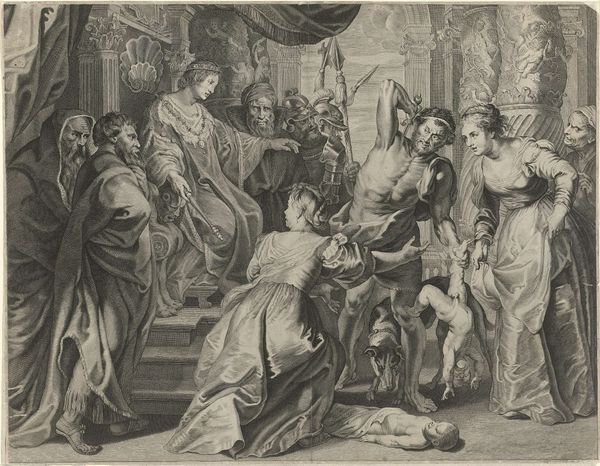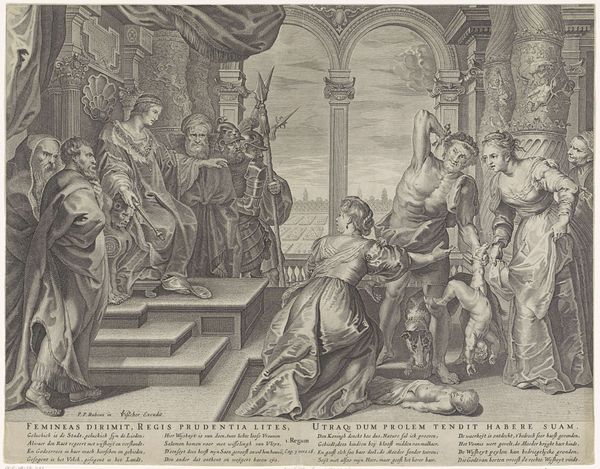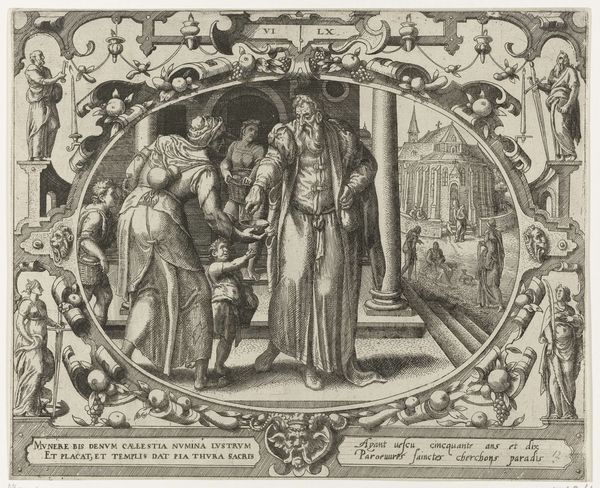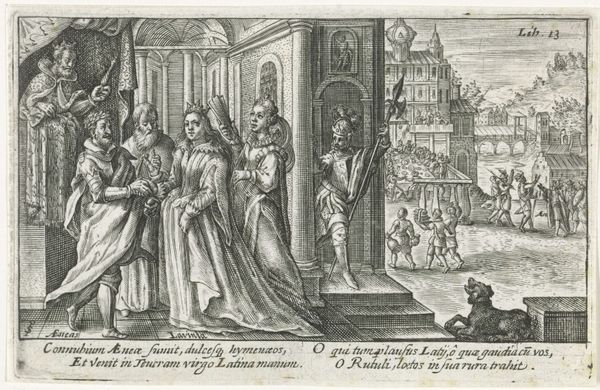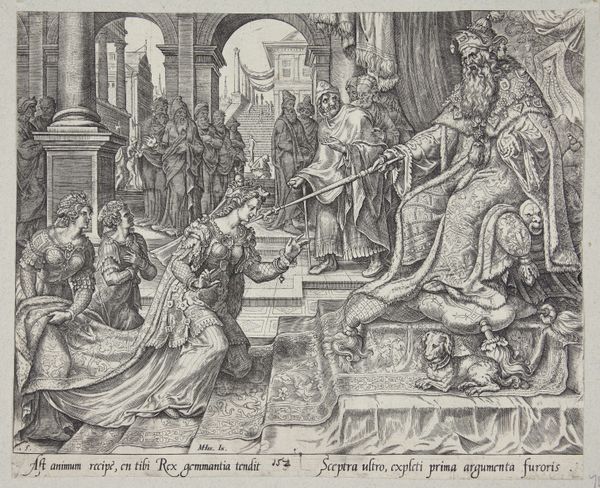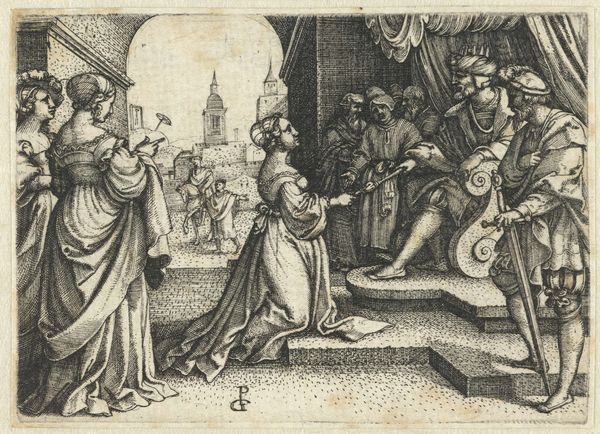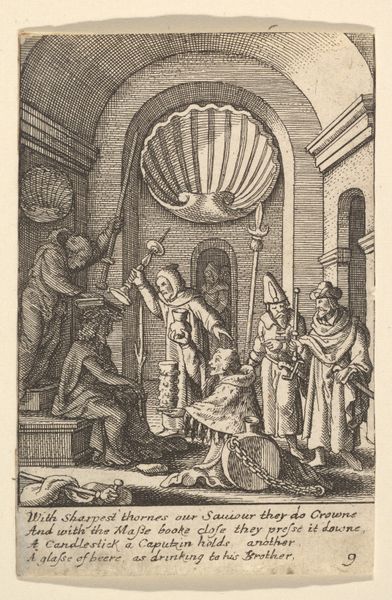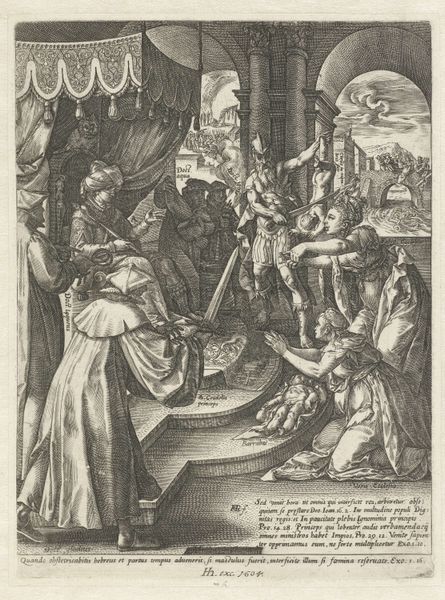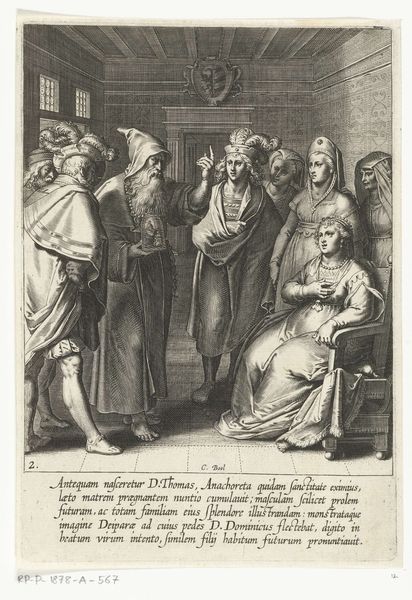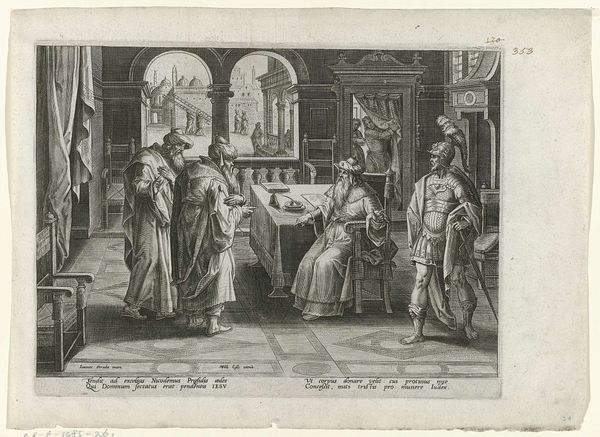
print, engraving
#
portrait
#
narrative-art
#
baroque
# print
#
figuration
#
line
#
history-painting
#
engraving
Dimensions: height 107 mm, width 140 mm
Copyright: Rijks Museum: Open Domain
Willem de Passe created this engraving, Keizer Theodosius en Athenais, in the first half of the 17th century. It depicts the Roman Emperor Theodosius presenting an apple to Athenais, a symbol laden with cultural and historical associations. Engravings like this one were crucial in disseminating stories and moral lessons during the Dutch Golden Age. Here, Theodosius's gesture can be interpreted through various lenses. The apple could represent temptation, referencing the story of Adam and Eve, or it could symbolize imperial power and status. The setting, with its classical architecture and figures, evokes the grandeur of the Roman Empire, subtly commenting on contemporary European power structures. Considering the religious and political landscape of the 17th century, images like these were often imbued with messages about leadership, morality, and the relationship between the ruler and the ruled. We can research emblem books, historical records, and even sermons of the time to understand these visual codes and their intended audience better. The meaning of art is never fixed, but always contingent on its social and institutional context.
Comments
No comments
Be the first to comment and join the conversation on the ultimate creative platform.
